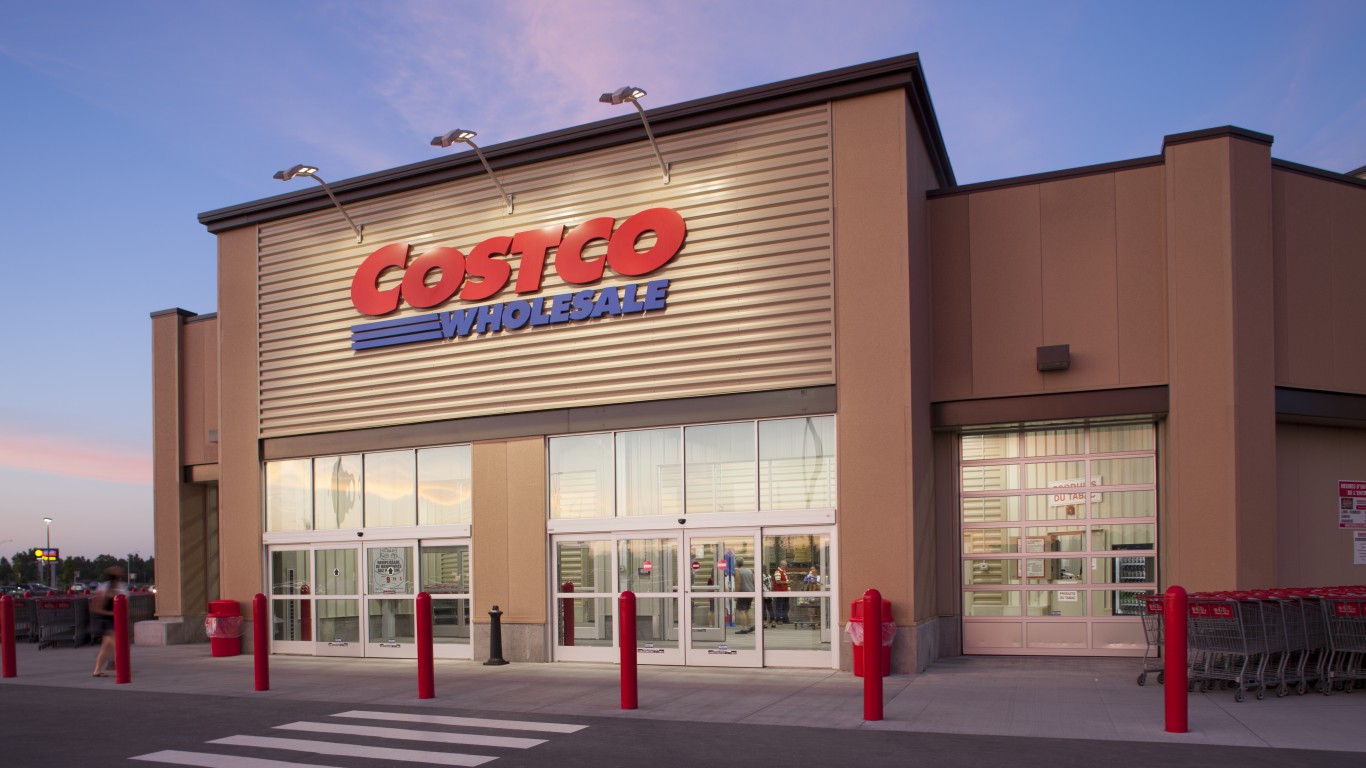
Shopify Inc. (NYSE: SHOP) has been compared with Amazon (NASDAQ: AMZN) since day one. Both of these companies occupy a significant portion of the e-commerce space. Amazon acts as a one-stop shop for practically anything online, while Shopify helps provide the platform for small businesses to sell their products online.
And both companies have been big winners of late. Shopify stock is up 96% year to date and 194% year to year. Meanwhile, Amazon has posted gains of 34% year to date and 46% over the past year.
Analysts expect for the most part that these stocks will continue higher but some are calling for Shopify to pull back. The S&P 500 is still down 4% year to date.
With e-commerce as one of the most dominant market trends recently, there’s no doubt why these stocks have gained so much this year. Although there has been a clear move in this direction for years, the pandemic has accelerated the trend.
Apart from the stock gains how do these two companies measure up?
What Do These E-Commerce Companies Do?
Amazon is one of the biggest, baddest companies on the planet. With a market cap of $1.2 trillion it is a force to be reckoned with. Every day millions of people buy and sell on Amazon. In fact, many consider it to be a market “Death Star,” able to move into any industry and take over.
Amazon is known for its massive e-commerce business and Amazon Web Services (AWS). The company also sells its own line of electronics, including an electronic assistant (Alexa) and tablets. In the past couple of years, Amazon has branched out into a streaming service and music service. It’s hard to believe that all of this came from a company that started out just selling books.
Shopify has a similar story as a gatekeeper for small businesses getting into e-commerce. Its e-commerce platform enables many small and midsize businesses to sell their products online.
One thing to point out about Shopify is that it operates the e-commerce platform for merchants worldwide and has little to do with the actual shipping, besides printing labels and assisting with finding a delivery company. Amazon has this aspect of its business built in, a key differentiation.
Amazon occupies a large space online and has millions of loyal consumers, while Shopify is getting more businesses into the game to compete against Amazon via its e-commerce platform.
Comparing the Numbers
Shopify and Amazon might not match up well in terms of the numbers just because of the sheer difference of scale. Amazon has a market cap of $1.2 trillion while Shopify has a market cap of $89 billion.
Shopify has a price-to-sales (P/S) ratio of 50.2 and a price-to-book ratio of 29.8, and Amazon has a P/S ratio of 4.2 and a price-to-book ratio of 18.9.
On the books, Shopify has total cash of $2.67 billion, which breaks down to $23.01 cash per share. The company’s debt on the balance sheet totals $141.5 million, giving it a debt-to-equity ratio of 3.94. Shopify has a book value per share of $25.94.
Amazon has $49.3 billion in cash, breaking down to $98.83 cash per share. Amazon’s total current liabilities come to $79.7 billion, which translates to a debt-to-equity ratio of 132.0. Book value per share comes to roughly $114.16.
The takeaway here is that each of these companies has seen incredible gains for their respective stocks — both near all-time highs for slightly different reasons. While Amazon has a much more robust business model and more impressive numbers, Shopify is up-and-coming and posting incredible year-over-year growth. To put it simply, these are two different ways for investors to play e-commerce: the typical debate of value versus growth investing.
Value vs. Growth
In the debate of value versus growth, it’s hard to pick a loser when the combatants are Amazon and Shopify, two of the best performing stocks so far this year. In terms of the share price gains, Shopify wins, but Amazon offers a compelling value proposition as well, it’s worth noting that some consider Amazon a growth stock because it does not pay a dividend.
Value investors may not see much in Shopify as the company is only barely profitable. However, its year-over-year revenue and user growth is exponential. This definitely makes the case for growth investors.
Amazon falls on the other side of the spectrum. The company offers consistent returns for investors and consistent growth. As a result, its value proposition is more stable than that of Shopify and it is far less likely to be disrupted. If anything, Amazon is doing the disrupting.
While the debate continues, Shopify investors won this round.
Get Ready To Retire (Sponsored)
Start by taking a quick retirement quiz from SmartAsset that will match you with up to 3 financial advisors that serve your area and beyond in 5 minutes, or less.
Each advisor has been vetted by SmartAsset and is held to a fiduciary standard to act in your best interests.
Here’s how it works:
1. Answer SmartAsset advisor match quiz
2. Review your pre-screened matches at your leisure. Check out the advisors’ profiles.
3. Speak with advisors at no cost to you. Have an introductory call on the phone or introduction in person and choose whom to work with in the future
Get started right here.
Thank you for reading! Have some feedback for us?
Contact the 24/7 Wall St. editorial team.

